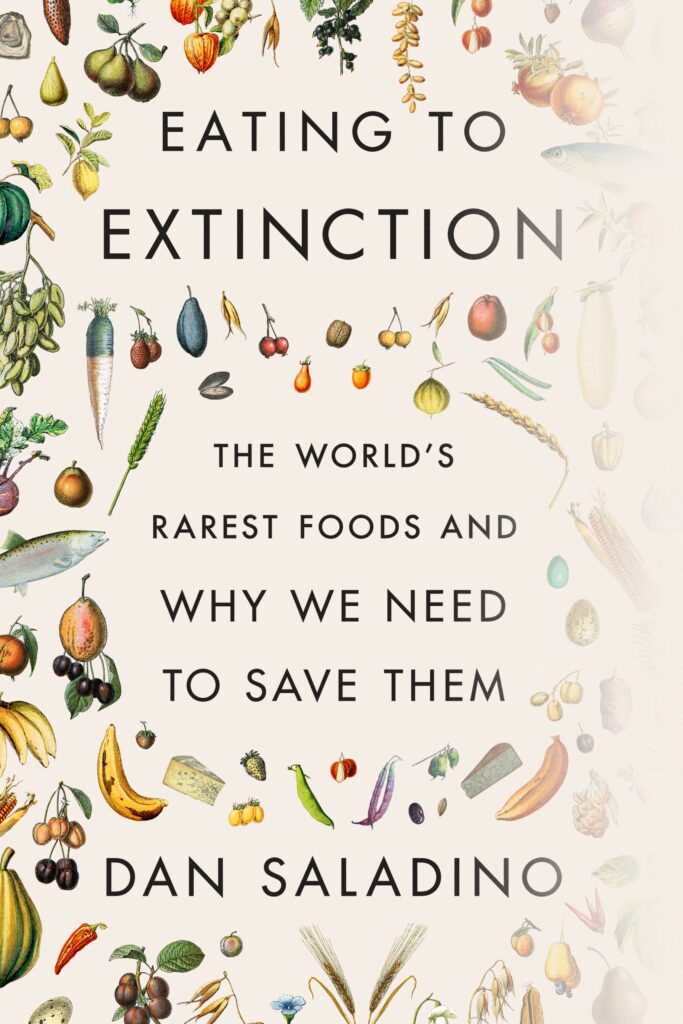
By Dan Saladino
Farrar, Straus and Giroux, 2023
480 pages, paperback, $20
Drawing on over 10 years of travel and research to document food on the brink of disappearing, BBC food journalist Dan Saladino created the captivating book “Eating to Extinction.” Divided into 10 sections of food types (including cereal, vegetable, cheese and alcohol), Saladino delves into the threats to food around the world. The emergent patterns articulate the bleak reality that the industrialization and globalization of food systems have smothered localized diversity, with a particularly disturbing concentration of a few corporations in control of what is produced. It is alarming that most seeds used for agriculture in the world are sold by only four corporations, that 50% of calories consumed globally are from only three plants — rice, wheat and corn, a tiny 0.05% of the 6,000 plants humans have regularly consumed in the past — and that most pork produced globally is based on the genetics of only one breed of pig. The examples go on.
In the final section, we are reminded that big corporations are not all of the story and that attacking food systems is a disturbing strategy of war. For example, farms in Syria have been destroyed by fighting, set on fire and riddled with mines. Conflict has also disrupted international projects of preservation, such as seed saving. In 2016, the research station Tel Hadya in Aleppo held a valuable seed collection encompassing 12,000 years of farming history. As war unfolded, the research station had frequent threats, including the kidnapping of staff. Eventually as many seeds as possible were frantically relocated to a new seed bank in Lebanon. Acts to destroy food systems not only starve communities but also erode culture and history.
“Eating to Extinction” is not solely a record of our troubles. With each case study, Saladino shares the history of each food as well as the heroic individuals dedicated to ensuring its existence. These slivers of possibility radiate hope in a subject that can feel hopeless. Take for instance, Cornelia Walker Bailey of Sapelo Island off the coast of Georgia. Bailey helped the Geechee Red Pea survive by growing the crop with her family, at one point going door to door asking people if they had peas she could use for planting. An essential part of Gullah Geechee cuisine and culture, this particular pea has been an ingredient in feeding people at gatherings and sustaining communities of islanders. Over time, the beauty of the island attracted developers and vacationers who bought up much of the land, pushing locals to the mainland. Bailey, however, stayed on and successfully maintained the cycles of Geechee Red Pea in her shrinking community.
“Eating to Extinction” is an urgent message to all of us. Individual, community and cultural practices are inextricable from the biology of food itself. Saving endangered foods is an act of preserving life, biological as well as cultural life, which includes people building and maintaining relationships with one another in the present and throughout time and over generations.
Catherine Preston-Schreck, Bar Harbor, Maine

